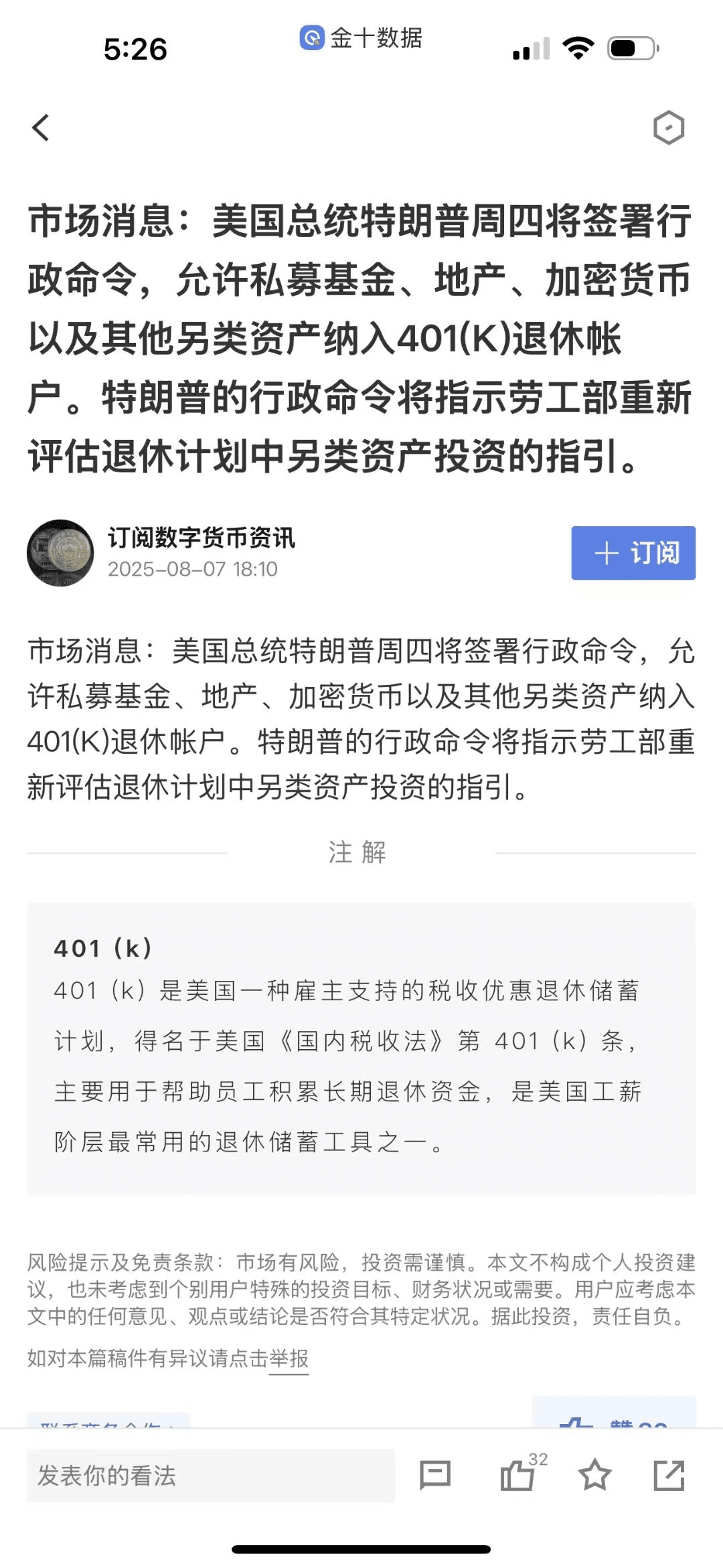In simple terms, the executive order that Trump is about to sign is like giving cryptocurrency a "retirement VIP pass." The scale of 401(k) accounts in the U.S. exceeds $7.3 trillion (equivalent to the total scale of China's public mutual funds); even if only 1% is allowed to buy cryptocurrency, that would be an incremental funding of $73 billion! That’s ten times more than all the VC investments in the crypto space in a year!
More critically, the policy directly transforms cryptocurrency from a "wild child" to a "regular army." Previously, pensions could only invest in stocks and bonds; now they can be placed alongside private equity and real estate, indicating that the U.S. government finally recognizes: cryptocurrency is not a "gambling chip" but a "major asset" that can enter retirement funds. This is similar to when internet stocks were included in the S&P 500 index, which directly initiated a decade-long bull market for tech stocks.
Why is ETH rising the most? Because it has become the "favored child of policy"!
Upon the news, ETH surged 3.5% in 15 minutes, while BTC only rose 1.28%. Why? Because ETH has already raced ahead in terms of "compliance"!
Compliance premium: ETH has been approved for futures ETFs (like ProShares' BITO), while BTC's spot ETF is still in negotiations with the SEC. Pension funds prioritize compliance and will certainly choose ETH first.
Technical alignment: ETH price breaks above the upper Bollinger Band ($3,820), MACD histogram turns positive, RSI hasn't reached overbought — simply put, "upward momentum is strong, and it hasn't overheated yet."
Leverage health: The perpetual contract funding rate is positive, indicating that bulls are not recklessly increasing leverage, leading to solid gains.
For example: just like Tesla's inclusion in the S&P 500 in 2020, which saw its stock price increase by 50% in a month. Now with ETH being "included" by pensions, it’s equivalent to receiving an "institutional certification stamp," which will only make it more sought after in the future.
On-chain data is secretly "spoiling" institutional movements.
Although the chart does not show on-chain data, historical patterns indicate that significant movements are likely happening at this time:
Whales are sweeping up: There is a high probability of addresses transferring over $100,000 in ETH.
Exchange withdrawals: Institutions will transfer ETH to cold wallets after purchasing.
Case study: In 2021, when Grayscale bought BTC, exchange withdrawal volume surged by 300%, directly pushing up the coin's price. This time, ETH may replicate the same script.
How will the future unfold? Short-term euphoria, mid-term divergence, long-term policy outlook.
Short-term catalysts:
When will the Labor Department release detailed rules (e.g., allowable allocation percentages)?
Which custodians will be the first to access 401(k).
Mid-term impact:
Pension institutions may design custodial solutions specifically for ETH.
Derivatives markets will launch longer-term ETH options, attracting more institutions.
Potential risks:
The Democratic Party may create issues and the short-term surge may lead to profit-taking.
Key data to watch closely:
Negative settlement fund flows four hours after midnight the next day (to see if bulls are overheating).
Coinbase's institutional trading volume (a barometer of institutional movements).
Number of addresses holding >10,000 ETH on Glassnode (Are whales accumulating?).
"The policy dividends have already been delivered, but ETH's 'institutional long march' has just begun.